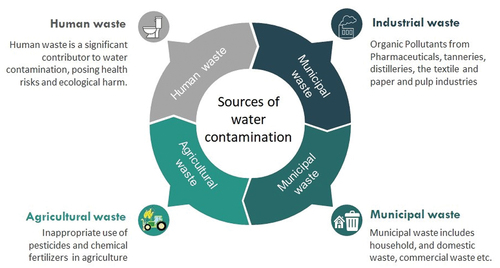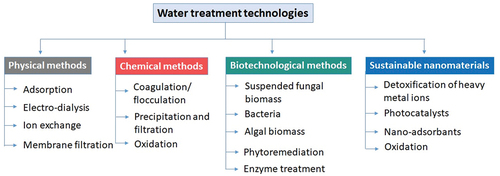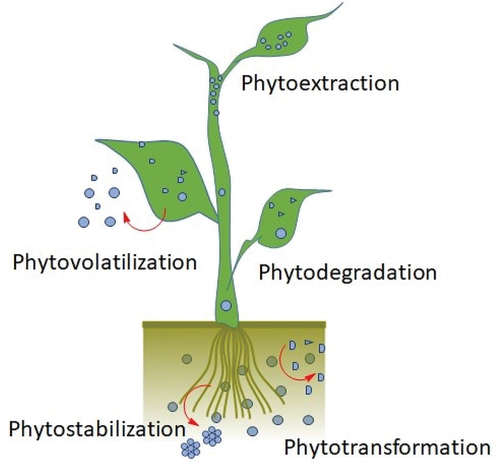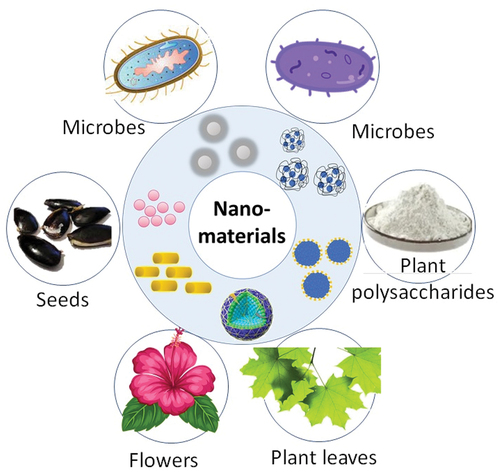Figures & data
Figure 1. Sources of water contamination – a comprehensive overview of factors contributing to water pollution, including industrial waste, agricultural waste, municipal waste and human waste.

Figure 2. A new hybrid process for separation of heavy metal ions from contaminated water using integrated processes combining metal bonding [Citation87].
![Figure 2. A new hybrid process for separation of heavy metal ions from contaminated water using integrated processes combining metal bonding [Citation87].](/cms/asset/3e2d8825-0379-456b-bc30-39dbe92c05f0/tcsb_a_2329660_f0002_b.gif)
Figure 3. Overview of advanced water treatment technologies, including chemical, biotechnological, and nanotechnological approaches for comprehensive water remediation.

Figure 4. Role of laccase enzymes and their natural phenolic mediators in soil bioremediation and detoxification of industrial waste [Citation116].
![Figure 4. Role of laccase enzymes and their natural phenolic mediators in soil bioremediation and detoxification of industrial waste [Citation116].](/cms/asset/e7b77ffd-53d9-4396-a4e8-58b912437aa5/tcsb_a_2329660_f0004_b.gif)
Figure 5. Illustration of physiological processes in plants facilitating the removal of toxic substances - insights into plant mechanisms for detoxification and Remediation.

Table 1. Preparation of NPs by using microbes and their applications.
Table 2. Plant extract mediated synthesis of nanoparticles and their applications in environmental remediation.
Table 3. The hazardous heavy metal contaminants and their negative impact on human health.
Table 4. Iron nanoparticles prepared from plant, size and adsorption capacity.
Table 5. Comparative analysis of toxic ion absorption capabilities of NPs synthesized using traditional and biological methods.
Data availability statement
Data sharing does not apply to this article as no datasets were generated or analyzed during the current study.


